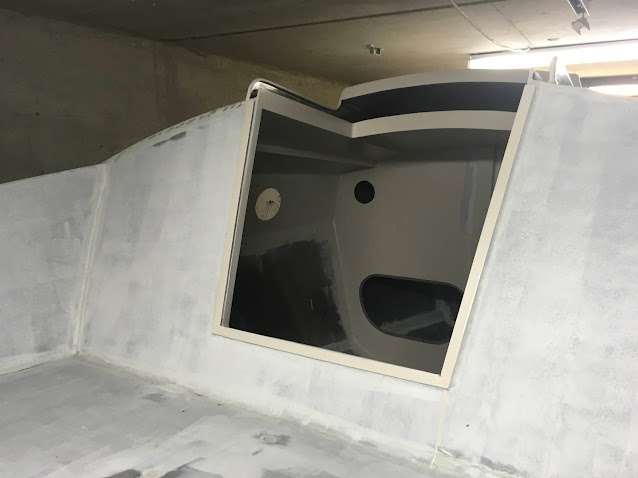Two posts at the same date? Wow. No I am not the writer I expected to be so publishing posts is a bit infrequent sorry (but hey time doesn't exist...).
After finishing the bottom hull I had to plan uprighting it again and so buying a trailer.
As you can expect my minimalist attitude (building a small boat) you also can imagine my fear of spending much money. But a trailer doesn't come cheap. So it took a while to overcome my "fears" telling myself that a berth in a marina costs about the same whithin 2 years... 🙇
And yes, it is on its trailer and yes, it went easier than expected. Roling back with a few neighbours (with relieved covid rules) putting it on the trailer and adust the trailer was done within an hour. Of course leaving several extra hours to consume the rewards in the form of a home brew beer!
Here it is...
And now for the centerboard. Actually I made that before turning the boat upright again ofcourse.
The centerboard was a kind of a "mind-struggle" as well. It needed some weight in order to drop and it needed some structural width in order to be strong enough to withstand perpendicular forces.
I considered 1 cm thick aluminium. That is material I can't machine or proces. I also considered a steel centerboard. Could be made out of thinner sheet, heavy enough to drop but maybe still quite bendable. And what about galvanic effects?. Untill a certain moment I saw a picture of a commercial aluminum boat builder that made a (profiled) holow centerboard. Life can be so simple (without knowing it...).
I allready made a profiled hollow rudder so why not a centerboard.
One of the things I learned from the rudder is that I can use pipe material for the edges but it is risky grinding it through quite easily. So I used rod instead.
Bending rod is easier as well. And the centerboard took shape. I added structure stiffners perpendicular to the edges of the centerboard trunk and added about 7 kilo's of balast lead as well. Here are the pictures:


 |
| Welding the inside frome the outside |
 |
Lead ballast
|
 |
Fitting the centerboard...
So far so good. As the "floating test" approaches I had tho think about thethering and so. Hmmm cleats.. That seemed a typical end stage job but why not thinking over now. That turned out to be seemingly simple but not so in reality (in my brains). I could choose between: too expensive, to small, to large or not aluminum resulting in having to drill holes in my boat. I am aware that I can't avoid drilling holes in my boat but I can try to reduce it to a minimum. Result: cleats can be made from aluminum. And yeaee... they become painted in the same color as the boat.
|



































